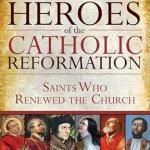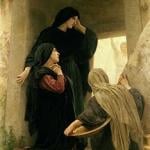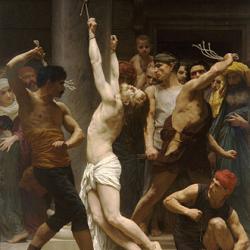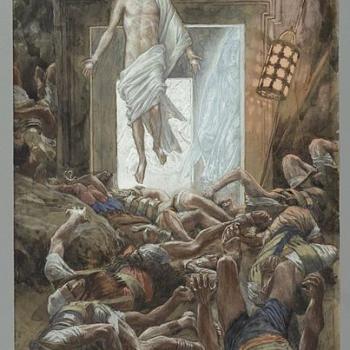Last time on HORATES
Welcome to the decade where
Mark Twain Enters Earth Riding On A Comet
1830
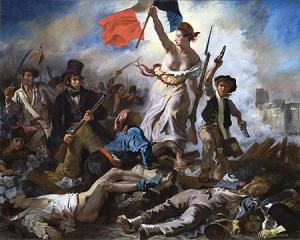
- May 28, 1830 – The United States Congress passes the Indian Removal Act, authorizing the President to negotiate with Native Americans in the United States for their removal from their ancestral homelands. This also has the effect of beginning mass destruction of bison in North America.
- July 18, 1830 – Catherine, a novice at the Daughters of Charity of Saint Vincent de Paul, reported that Mary appeared to her one night in the convent chapel and asked that a specific medallion be made, promising that “all who wear this medal will receive great graces.” The medal eventually produced is most commonly known as the Miraculous Medal due to the many miracles that were connected with it. The front of the medal displays a picture of Mary as Catherine described her. The design on the reverse includes the letter M and a cross.
- November 30, 1830– Pope Pius VIII, Italian pontiff (b. 1761) dies ater 1 year, 244 days.
- Mary Had a Little Lamb is an English language nursery rhyme of nineteenth-century American origin, first published by American writer Sarah Josepha Hale in 1830. It has a Roud Folk Song Index number of 7622.
1831
NEW POPE
- February 2 ,1831 – Pope Gregory XVI succeeds Pope Pius VIII, as the 254th pope.
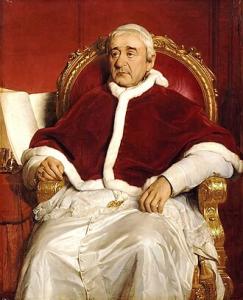
- March 16 , 1831– Victor Hugo‘s historical romantic Gothic novel Notre-Dame de Paris, known in English as The Hunchback of Notre-Dame, is published in Paris.
1832
- June 9,1832 – The Strasburg Rail Road is incorporated by the Pennsylvania State Legislature, making it the oldest continuously operating railroad in the Western Hemisphere.
- August 2, 1832 – The Bad Axe Massacre ends the last major Native American rebellion east of the Mississippi in the United States.
- Sir Walter Scott (Scottish) (August 15, 1771 –September 21, 1832) author of Ivanhoe dies.
- Gabriel Richard October 15, 1767 – September 13, 1832) was a French Roman Catholic priest who ministered to the French Catholics in the parish of Sainte Anne de Détroit, as well as Protestants and Native Americans living in Southeast Michigan. He established schools, a library, and vocational training with weaving looms. After Detroit was nearly destroyed by a fire in 1805, he and others created a new layout for the city. His motto following the fire, Speramus meliora; resurget cineribus (“We hope for better things; it will arise from the ashes”) is inscribed on the Seal of the City of Detroit. – American Catholic History
- Charles Carroll of Carrollton (September 19, 1737 – November 14, 1832) dies. He was an American politician, planter, and signatory of the Declaration of Independence. He was the only Catholic signatory of the Declaration and the longest surviving, dying 56 years after its signing. -American Catholic History
- My Country, ‘Tis of Thee also known as simply “America“, is an American patriotic song, the lyrics of which were written by Samuel Francis Smith. The song served as one of the de facto national anthems of the United States (along with songs like “Hail, Columbia“) before the adoption of “The Star-Spangled Banner” as the official U.S. national anthem in 1931. The melody used is adopted from the national anthem of the United Kingdom, “God Save the King“.
1833
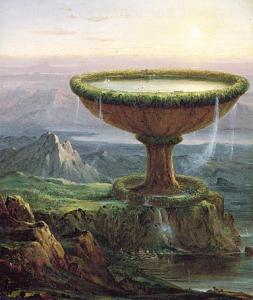
- February 16 – Victor Hugo and Juliette Drouet begin a fifty-year affair. This is recorded in his novel Les Misérables (1862) as the date of Marius and Cosette’s wedding night (Part V, Book 6, Chapter 1).
- August 20, 1833 – Future United States President Benjamin Harrison is born in Ohio. From this date until the death of Former U.S. President James Madison on June 28 1836, a total of 18 Presidents of the United States (2 former, 1 current, and 15 future) are living; which is more than any other time period in U.S. history.
- December, 1833 – The American Anti-Slavery Society is founded.
- December 14, 1833 – Kaspar Hauser, a mysterious German youth, is stabbed, dying three days later on December 17.
- The first Mardi Gras parade held in New Orleans is recorded to have taken place in 1833 with Bernard de Marigny funding the first organized parade, tableau, and ball. – American Catholic History
1834
- February 12, 1834 – Freed American slaves from Maryland form a settlement in Cape Palmas, it is named the Republic of Maryland.
- July 7, 1834– In New York City, four nights of rioting against abolitionists
- August 1, 1834 – Slavery is abolished in the British Empire as the Slavery Abolition Act 1833 comes into force, although it remains legal in the possessions of the East India Company until the passage of the Indian Slavery Act, 1843.
- The Basilica of Saint Louis, King of France is a Catholic church in St. Louis, Missouri. The current structure (built 1831–1834) is located near the historic riverfront of St. Louis. It is surrounded by Gateway Arch National Park. However, the church is not part of the park. Because of the historical significance of the church, it was left intact while all neighboring buildings were demolished to make way for the Gateway Arch and related park. American Catholic History
- Rev. Daniel Barber (1756 – 1834) dies. He was an Episcopal priest who converted to the Catholic Church along with his wife. – American Catholic History
Delphine LaLaurie (March 19, 1787 – December 7, 1849), was a New Orleans socialite and serial killer who was believed to have tortured and murdered slaves in her household. Accounts of Delphine’s treatment of her slaves between 1831 and 1834 vary.
On April 10, 1834, a fire broke-out in the Royal Street mansion, beginning in the kitchen. When police and fire marshals reached the residence, they found a 70-year-old cook chained to the stove by her ankle. The cook later said that she had set the fire as a suicide attempt because she feared being punished, stating that slaves taken to the uppermost room “never came back”.
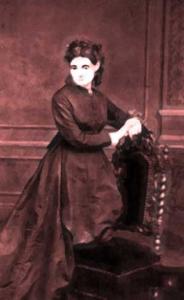
As reported in the New Orleans Bee of April 11, 1834, bystanders responding to the fire attempted to enter the quarters of those enslaved to ensure that everyone had been evacuated. Upon being refused the keys by the LaLauries, the bystanders broke down the doors to the quarters and found “seven slaves, more or less horribly mutilated … suspended by the neck, with their limbs apparently stretched and torn from one extremity to the other”, who claimed to have been imprisoned there for some months.
- December 1, 1834 – Slavery is abolished in the Cape Colony in accordance with the Slavery Abolition Act 1833.
- The Last Days of Pompeii is a novel written by Edward Bulwer-Lytton in 1834. The novel was inspired by the painting The Last Day of Pompeii by the Russian painter Karl Briullov, which Bulwer-Lytton had seen in Milan.[1] It culminates in the cataclysmic destruction of the city of Pompeii by the eruption of Mount Vesuvius in AD 79.
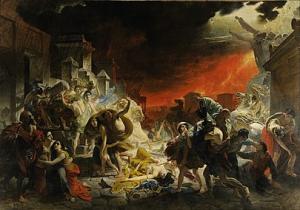
1835
Picture This
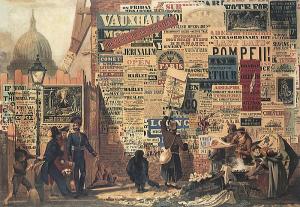
John Orlando Parry – The Poster Man
News of the World
- January 24, 1835 – Slaves in Salvador da Bahia, Brazil, stage a revolt, which is instrumental in ending slavery there 50 years later.
- February 1, 1835 – Slavery is abolished in Mauritius.
- June 2, 1835 – P T. Barnum and his circus start their first tour of the United States.
- September 15, 1835 – HMS Beagle, with Charles Darwin aboard, reaches the Galápagos Islands. The ship lands at Chatham or San Cristobal, the easternmost of the archipelago.
Arrivals
November 30– The Legendary author of Tom Sawyer and Huck Finn Mark Twain (Samuel Langhorne Clemens) is born.
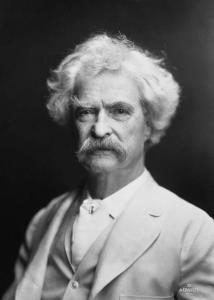
Departures
Saint Magdalene of Canossa (March 1, 1774 – 10 April 10, 1835) was an Italian professed religious and foundress of the two Canossian congregations.
Joseph Brooks Weller (1802–1835) dies. Joseph along with his brothers George (1805–1875) and Edward (1814–1893), The Weller brothers, Englishmen of Sydney, Australia, and Otago, New Zealand, were the founders of a whaling station on Otago Harbour and New Zealand’s most substantial merchant traders in the 1830s. It is the first enduring European settlement in what is now the City of Dunedin. Their company ships became the basis of the ever popular sea shanty “Wellerman“. The song was originally collected around 1966 by the New Zealand-based music teacher and folk song compiler, Neil Colquhoun.[8][7] The song has been performed and remixed, with over ten recorded renditions between 1967 and 2005, including by British band The Longest Johns in 2018 and Scottish singer Nathan Evans in 2020 and this version.
Publications Hot of the Press
Edgar Allen Poe publishes the short story Morella, in the April edition of the Southern Literary Messenger which contains this poem…
At morn—at noon—at twilight dim—
Maria! thou hast heard my hymn!
In joy and wo—in good and ill—
Mother of God, be with me still!
When the Hours flew brightly by,
And not a cloud obscured the sky,
My soul, lest it should truant be,
Thy grace did guide to thine and thee;
Now, when storms of Fate o’ercast
Darkly my Present and my Past,
Let my Future radiant shine
With sweet hopes of thee and thine!
May 8– The first of Hans Christian Andersen‘s 168 fantastic stories are published as Fairy Tales Told for Children. First Collection
August 25 – The first of six articles on discoveries of living creatures on the Moon supposedly made by Herschel and a fictitious companion named Dr. Andrew Grant is published in the New York Sun. This incident is now known as the Great Moon Hoax
Sanctifying Time
All traces of official opposition to heliocentrism by the church disappeared in 1835 when certain works by astronomer Nicolaus Copernicus and astronomer Johannes Kepler were finally dropped from the Catholic Church’s Index of forbidden books.
The Sound of Music and Other Cultural Milestones
August 5 – The director of the Collegio Romano at the Vatican, Father Dominique Dumouchel, is the first person to see the return of Halley’s Comet .
Frédéric Chopin – Ballade No. 1
1835-“The ABC Song“ is the best-known song used to recite the English alphabet in alphabetical order. It is commonly used to teach the alphabet to children in English-speaking countries. “The ABC Song” was first copyrighted by Boston music publisher Charles Bradlee. The melody is from a 1761 French music book and is also used in other nursery rhymes like “Twinkle, Twinkle, Little Star“. It is not known who first set the alphabet to this tune. Songs set to the same melody are also used to teach the alphabets of other languages.
1836
- Claude Joseph Rouget de Lisle (May 10, 1760 – June 26, 1836) dies. He was a French army officer of the French Revolutionary Wars. He is known for writing the words and music of the Chant de guerre pour l’armée du Rhin in 1792, which would later be known as La Marseillaise and become the French national anthem.
- March 6, 1836 – Texas Revolution: Battle of the Alamo: After a thirteen-day siege by an army of 3,000 Mexican troops, the 187 Texas volunteers,including frontiersman Davy Crockett and colonel Jim Bowie, defending the Alamo are killed and the fort is captured.
- Fr. Anthony Kohlmann (July 13, 1771 – April 11, 1836) dies. He was an Alsatian Catholic priest, missionary, theologian, and Jesuit educator. He played a decisive role in the early formation of the Archdiocese of New York, where he was the subject of a lawsuit that for the first time recognized the confessional privilege in the United States, and served as the president of Georgetown College from 1817 to 1820. – American Catholic History
June 15, 1836– Arkansas is the 25th state admitted into the United States of America. - Jean-Louis Lefebvre de Cheverus (January 28, 1768 – July 19, 1836) was a French Roman Catholic bishop and later cardinal. Cheverus served as the first bishop of the Diocese of Boston in Massachusetts in the United States. He later served as bishop of the Diocese of Montauban and archbishop of the Archdiocese of Bordeaux, both in France. – American Catholic History
- September 5, 1836 – Sam Houston is elected as the first president of the Republic of Texas.
1837
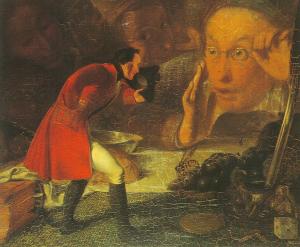
- January 26, 1837 – Michigan becomes the 26th state admitted to the United States.
- February 1837– Charles Dickens‘s Oliver Twist begins publication in serial form in London.
- March 4, 1837 –Martin Van Buren is sworn in as the eighth President of the United States.
- 1837: The Mysterious Lost Tribes of Israel -The American diplomat and journalist Mordecai Manuel Noah proposed the idea that the indigenous peoples of the Americas are descended from the Israelites in his publication The American Indians Being the Descendants of the Lost Tribes of Israel
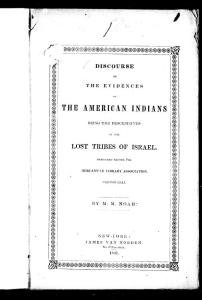 June 9, 1837– Three Days of Darkness? Blessed Anna Maria Taigi (May 29, 1769 – June 9, 1837) dies. She was an Italian Catholic professed member from the Secular Trinitarians. Taigi reportedly experienced a series of ecstasies during her life and heard the voices of God and Jesus Christ on several occasions. She also known for her prediction of the three days of darkness.
June 9, 1837– Three Days of Darkness? Blessed Anna Maria Taigi (May 29, 1769 – June 9, 1837) dies. She was an Italian Catholic professed member from the Secular Trinitarians. Taigi reportedly experienced a series of ecstasies during her life and heard the voices of God and Jesus Christ on several occasions. She also known for her prediction of the three days of darkness.
1838
- January 9, 1838 – Spring-Heeled Jack The Lord Mayor of London, Sir John Cowan, states publicly the misdoings of the person who became known as Spring-Healed Jack. “The unmanly villain has succeeded in depriving seven ladies of their senses, two of whom are not likely to recover, but to become burdens to their families. The affair has now been going on for some time, and, strange to say, the papers are still silent on the subject. The writer has reason to believe that they have the whole history at their finger-ends but, through interested motives, are induced to remain silent”.

- May 26, 1838 – Trail of Tears: The Cherokee Nation is forcibly relocated in the United States.
- June 28, 1838 – The coronation of Queen Victoria of the United Kingdom takes place at Westminster Abbey in London
- William Clark (August 1, 1770 – September 1, 1838) dies. Along with Meriwether Lewis, Clark led the Lewis and Clark Expedition of 1804–1806 across the Louisiana Purchase to the Pacific Ocean, the first major effort to explore and map much of what is now the Western United States and to assert American claims to the Pacific Northwest.
- Charles Dickens writes
- Nicholas Nickleby (serialization begins)
- Oliver Twist (in book form)
1839
- January 2, 1839– The first photograph of the Moon is taken, by French photographer Louis Daguerre.
- Benjamin Petit (April 8, 1811 – February 10, 1839) was a Catholic missionary to the Potawatomi at Twin Lakes, Indiana, where he served from November 1837 to September 1838. – American Catholic History
- March 9, 1839 –Prussia imposes The Child Labor Law of 1839, becoming the first nation in the world to place restrictions on child labor.
- Marianne Hainisch (March 25, 1839 – May 5, 1936) dies. She was the founder and leader of the Austrian women’s movement. She was also the mother of Michael Hainisch, the second President of Austria (1920–1928).
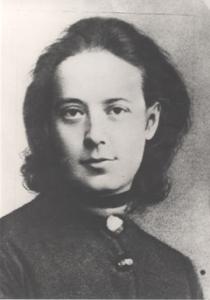
- Simon Bruté March 20, 1779 – June 26, 1839) was a French missionary in the United States and the first bishop of the Diocese of Vincennes, Indiana. President John Quincy Adams called Bruté “the most learned man of his day in America.” – American Catholic History
- Among those buried in the graveyard of the earliest Catholic settlement in what is now the state of Arkansas called the Arkansas Post, is Mother Agnes Hart, a member of the Sisters of Loretto of Kentucky. Mother Hart was the superior of the Sisters who came out in 1838 to establish schools for the girls of the region. Mother Hart died of malaria in 1839, but she was held in such high regard that those who buried her placed a bed of roses in her grave on which to lay her body. Then, twelve years later, when they had to move the graveyard, her body was found to be “petrified.” And after a miraculous cure attributed to her intercession in 2007, many regard her as a saint worthy of canonization. (1797 -1839) American Catholic History
- Saint Andrew Dũng-Lạc (c. 1795 – December 21, 1839) was a Vietnamese Roman Catholic priest. He was executed by beheading during the reign of Minh Mạng.
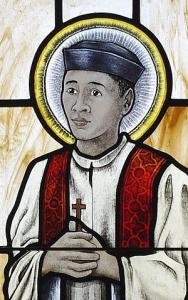
Next Time on
HOARATS
The Longest Pope at La Salette -1840’s
To Understand
What I love and How I Write About History
Hit the Link Above.
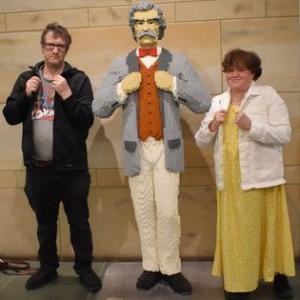
To understand about this particular series I’m writing about, please read
The Catholic Bard’s Guide To History Introduction
And to view a historical article click on



